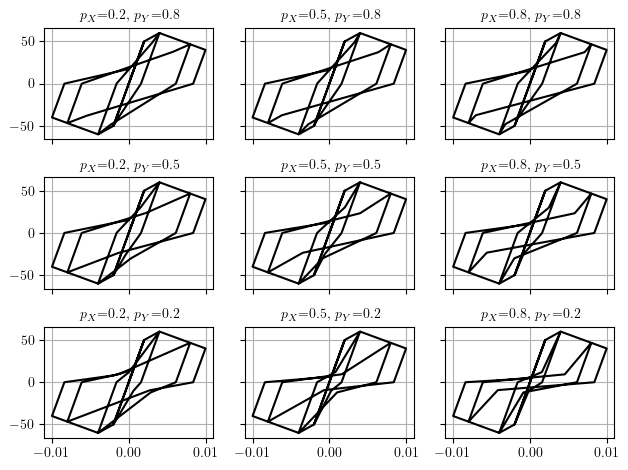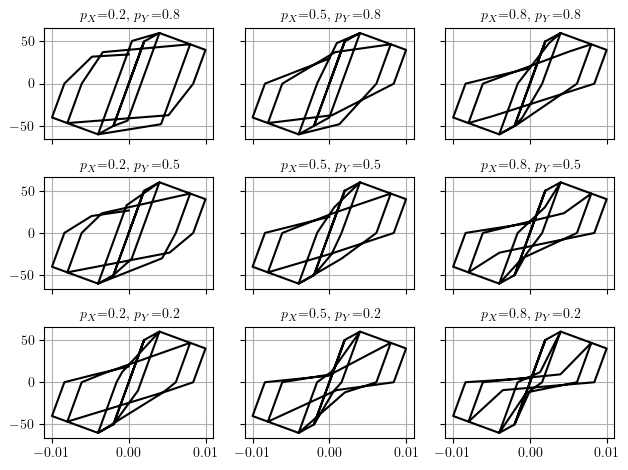OpenSees Cloud
OpenSees AMI
Hysteretic Pinching Parameters
Original Post - 27 Dec 2020 - Michael H. Scott
I receive a lot of questions about the pinching parameters for the
HystereticMaterial in OpenSees. Despite the best of intentions, one-off
responses to these queries often went unanswered. But now, with the
blog, a one-off response has staying power. So, here goes.
The HystereticMaterial dates back to the G3 days. Along with Steel01
and Concrete01, HystereticMaterial was one of the FEDEAS material
models that I ported from FORTRAN to C++ when I started learning what
would become OpenSees.
Three points define each of the positive and negative backbone functions–that is pretty straightforward. What’s more nebulous is the pinching parameters, which allow the modeler to simulate the opening and closing of cracks in cyclic loading of reinforced concrete members. In addition, three damage parameters simulate cyclic strength and stiffness degradation. But in this post, I’ll focus on the pinching parameters.
In the original FEDEAS-based implementation of HystereticMaterial, the
pinching behavior looked like this over the range of pX and pY between 0
and 1.

Some time between this Zip disk and now, the pinching behavior of the
HystereticMaterial changed and it now looks like this for the same
values of pinching.

Based on a comment in the source code, I believe this change happened in 2006. I’m not sure why the change was made, but it makes the pinching behavior more general. When pY is greater than pX, the hysteresis loops switch from innies to outies, i.e., as a friend told me, you get the opposite of pinching. Would that be pulling?
If you are interested, the original FEDEAS implementation is available
in OpenSees as Hysteretic1, which I’m pretty sure is undocumented.
I work on problems related to modeling and nonlinear structural analysis. If these problems are relevant to a current professional project, feel free to reach out.